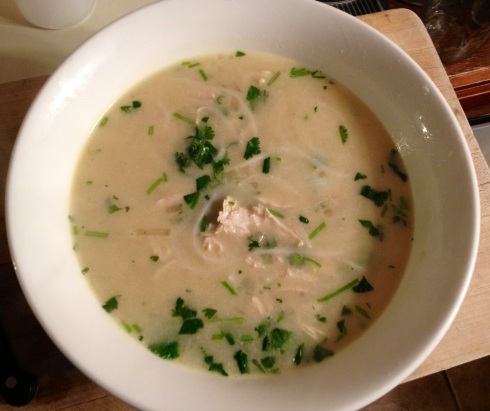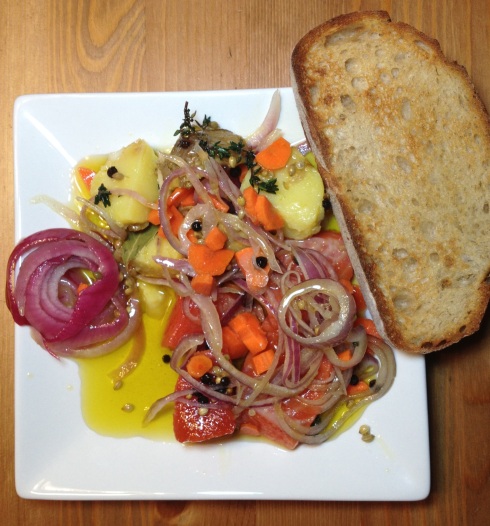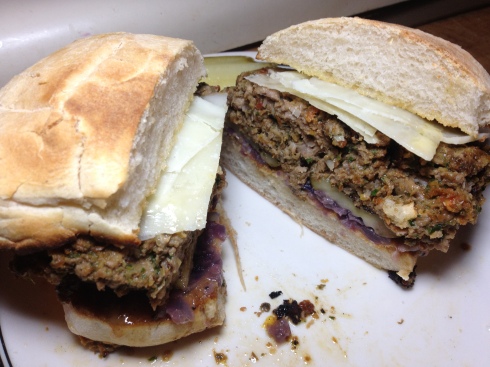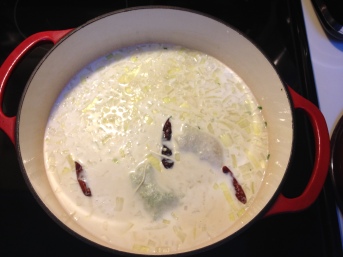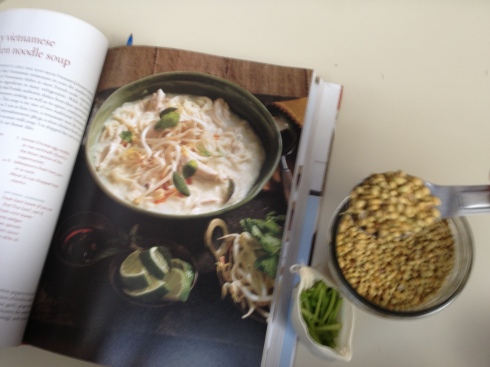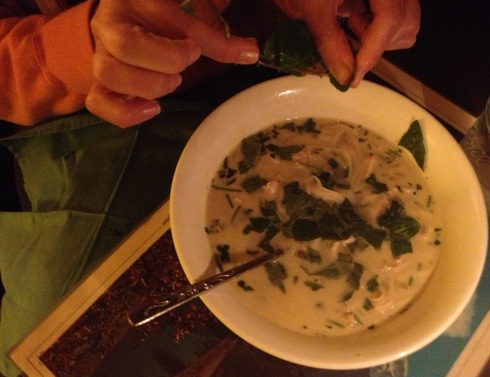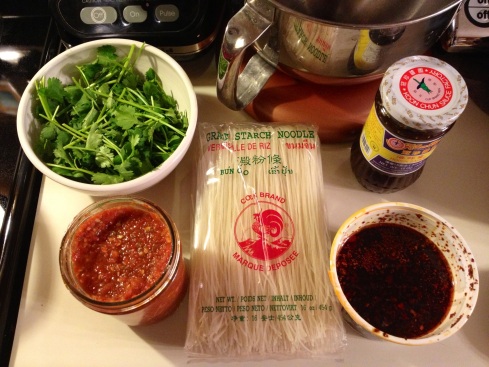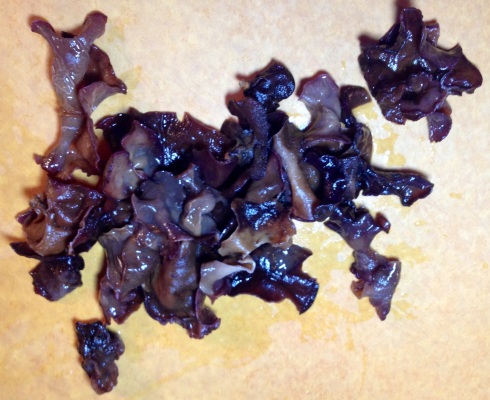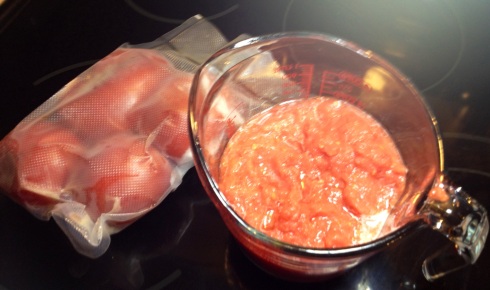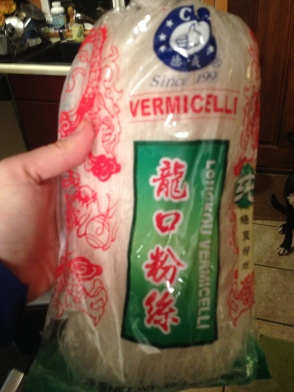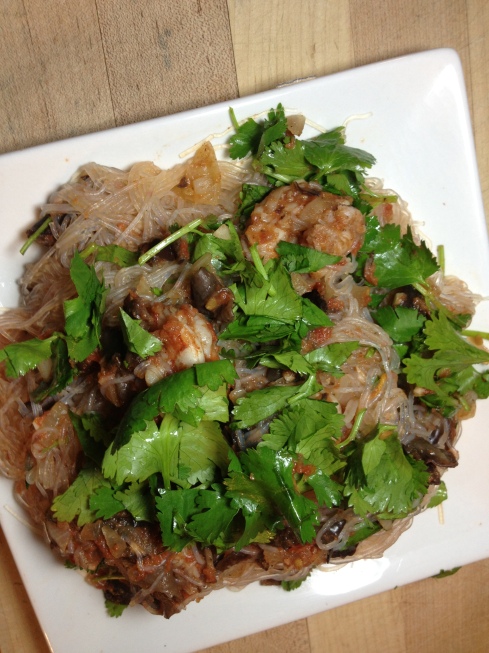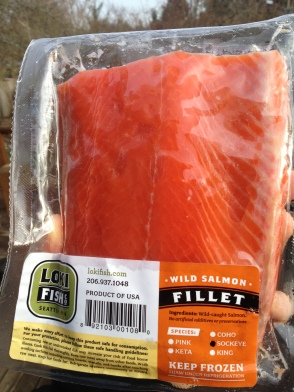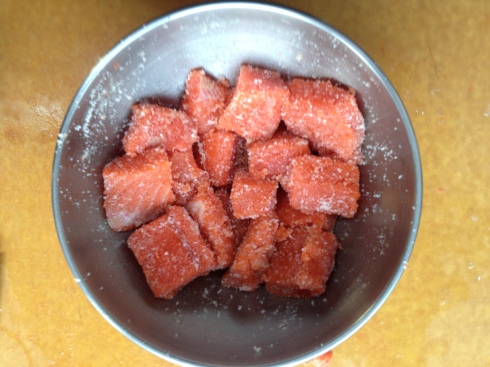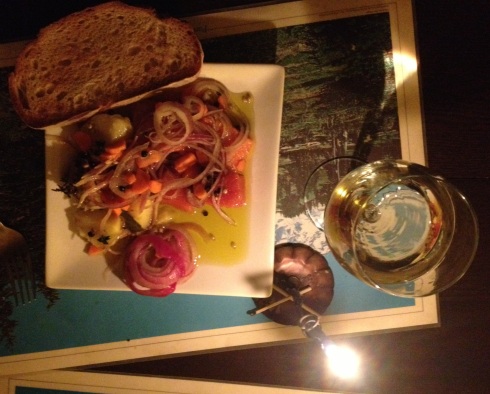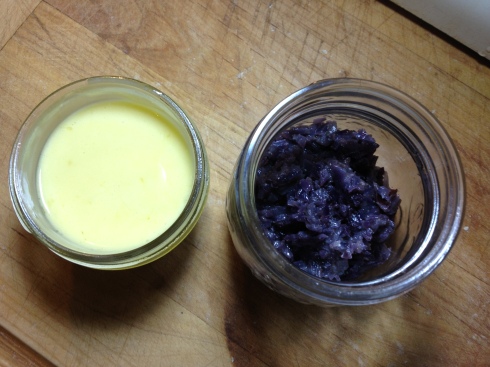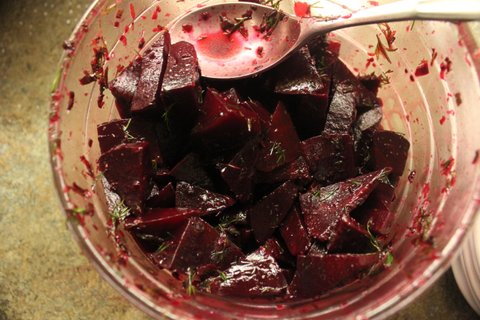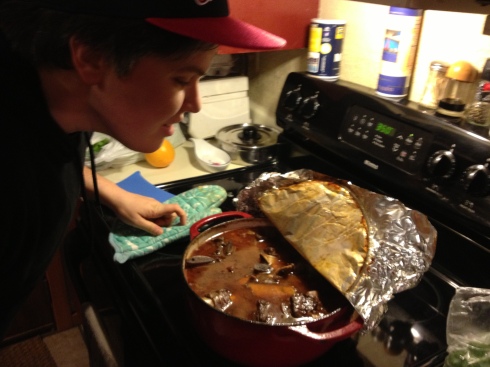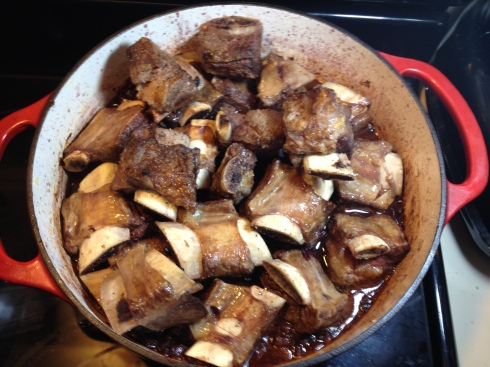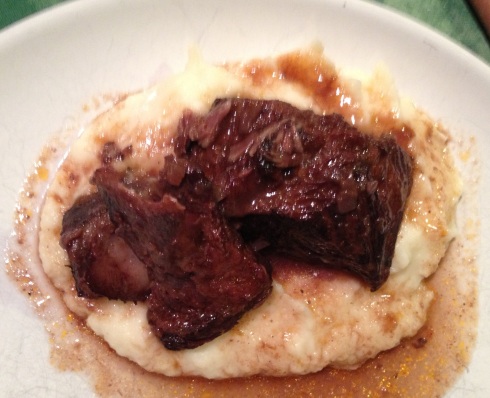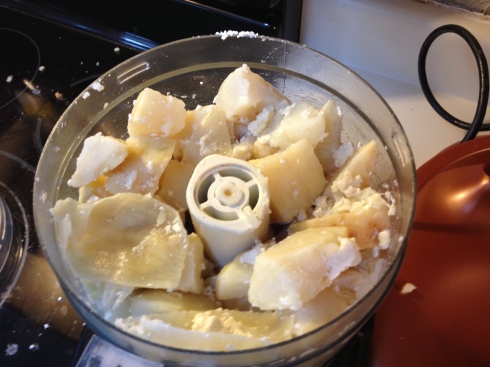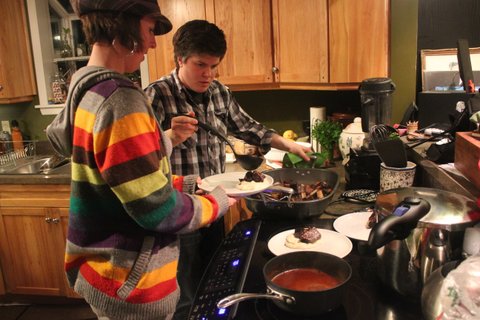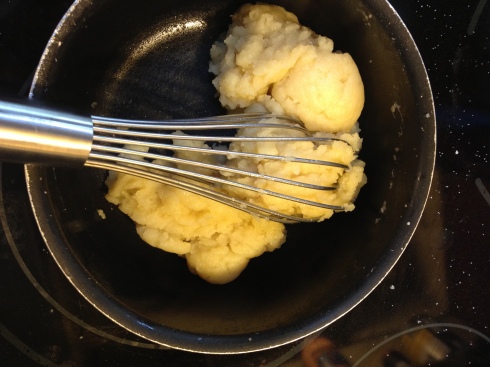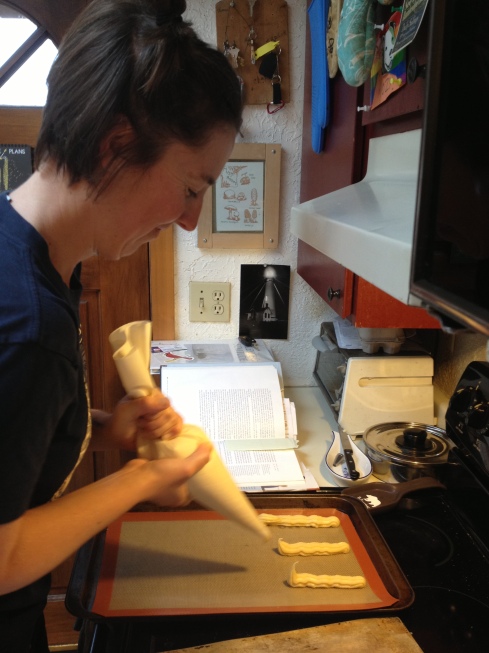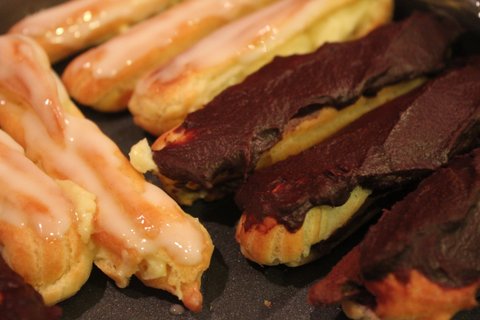Welcome to the end of the month, friends! The Cook the Books Challenge hosted by yours truly and my pal Meg over at Grow and Resist is now…officially…1/12th over!
Don’t cry or stress eat! We still have 11 months of fun to go!
February is almost here and we’re soon gonna be talking all about dumplings. Check out my introduction to February’s book if you haven’t already. And tomorrow, go to Meg’s blog for a round-up of all the bloggers that joined us in January! We had more than 15 people cooking right along with us and living to blog the tale. Yay! Non bloggers will be there too, we hope, in the comments telling us about their adventures with Dorie. But for now, let’s check in about our book from January, Around My French Table, by Dorie Greenspan.
I picked up Around My French Table back in December as we were all wassailing around our holiday whatevers. It seems so long ago now. At first, I was a little intimidated by taking on French cooking right out of the gate. I had never cooked French food before, or even heard of Dorie Greenspan. What the heck? What was I born in a barn or something? Now, ooh la la! Look at me, calling Dorie by her first name, whisking all the effing time, casually asking Double S to pick up gruyere at the local grocer, and wishing Dorie would swoop in with her “bonne idees” in my real life. Thanks for the memories, Dorie!
So, what are the key elements of a good cookbook? What can I tell you about this book that will help you decide whether you want to get your hot little hands on it? With each cookbook this month, I’m going to focus on five factors that help me evaluate whether a cookbook is a keeper or not: layout, aesthetics, ingredients/supplies relied upon, additional helpful information provided by the author, and the recipes themselves. Ok? So let’s go!
LAYOUT
The layout of Around My French Table is clear and intuitive. Dorie organizes her chapters first by course, and then by protein within the entree course: nibbles and hors d’oeuvres, soups, salads, desserts, as well as chicken and duck, fish and shellfish, beef/pork/veal/lamb, and vegetables and grains. She ends with a chapter called “Fundamentals and Flourishes” that I often found myself flipping to to read Dorie’s takes on the basics like vinaigrettes and the like. At the start of each new chapter is a table of contents, providing the title and page number of all the dishes she makes within that chapter.
There is also a helpful, cross referenced index at the back of the book. You can look up recipes by searching by ingredient, or by the title of the recipe. I did notice that some of the more creatively named recipes were not listed in the index under the name given, but instead by a key ingredient. For example, “Go With Everything Celery Root Puree” is not found under “G,” but is found under “celery” and “purees.” Dishes with self explanatory names are listed in the index under the name given. No big whoop, just saying.
The book begins with a brief but interesting introduction. Dorie doesn’t go on at too much length about her life, but you get some key points that personalize the recipes. She was a graduate student whose love of Paris and French cooking made her leave graduate school and follow her passion. Good choice, Dorie!
Just kidding, graduate school friends! Ahem.
The recipes themselves are laid out in an easy to follow way. The instructions aren’t numbered, but each step is a short and manageable self-contained paragraph. Also, each recipe clearly states how many servings the recipe makes, as well as her suggestions for serving and storing, which was helpful. Also, and one of my favorite of the flourishes Dorie uses, she includes a “Bonne Idee” (or good idea) with a lot of the recipes, with suggestions on variations you might want to explore with each recipe.
The only improvement I’d make to the layout of Dorie’s book is perhaps a section at the start of each recipe listing any unusual supplies you will need for the recipe, and how much time it will take to make the recipe. Like, “This will take two days!” Yes, you can get this by carefully reading the recipe. But sometimes when I plan what I’m making, I only skim the recipe to make a grocery list. Then later when I’m about to cook , I read the recipe and realize I needed a specific accoutrement that I don’t have, or that it would have been much preferable to start something a day or two ago. D’oh! This just happened to me when I tried to make Dorie’s crepes over the weekend while Double S and I were on a weekend getaway. I didn’t see until the second page of the recipe, on the morning that we were going to eat the crepes, that the batter is much better if refrigerated at least 12 hours. Double d’oh! The crepes turned out good, but were thin because I only chilled the batter for a bit less than two hours.
This is especially annoying if I am stressed for time or not in my own kitchen with my supplies. Just a simple little section next to serving or storing suggestions with this information would be helpful.
AESTHETICS
Ok, so this book is nice to look at. Beautiful photographs on glossy, high quality paper with a sturdy binding and a removable book jacket. Then there are the photos. There are photos of finished products, luscious produce, Dorie demonstrating techniques, and so on.
I do like cookbooks that have a picture accompanying each recipe though. Dorie has pictures of less than half of her entrees. For example, 6 of her 18 seafood recipes are accompanied by photos. I’m sure it is cost prohibitive to have more photographs of this quality, but it would have been helpful on several occasions for me. As I told you when I made the Shrimp With Cellophane Noodles (page 322), seeing the dish would have given me a better sense of what noodles Dorie was suggesting. Because I guessed on that key element, the dish turned out not nearly as good as it could have been. I may have over thought that, but still, a picture would have prevented the problem, especially for a pretty unusual recipe.
And, bonus! The recipes turned out to look like what the photographs showed! Here were a few of my favorite things I made! All had pictures in the cookbook, and all resembled the photographs therein! Success!
Spicy Vietnamese Chicken Noodle Soup!
Cheese Topped Onion Soup!
Wow! Those look good! I have one question for you:
Oh, yes. Yes, I did.
INGREDIENTS/SUPPLIES
A real strong point of Around My French Table is that the ingredients and supplies needed are readily accessible. No need to travel all over the city looking for an obscure herb. Not that there’s anything wrong with that, but it does make this book really easy to use on a weeknight or without much pre-planning. Gotta love that.
There is no glossary of ingredients or equipment she uses, but with a book like this, it’s not needed. Dorie mentions at the beginning of the book that all the ingredients used in the book are readily available at most neighborhood grocery stores, and that the techniques are practical and realistic. I found all of that to be true. Her main specification came when she stated what she means when she says eggs, butter, and milk, which are ingredients you’ll find in many of her recipes. Large, unsalted, and whole, respectively. That’s about all the extra information you need to know. With this book, there was no need for more information on ingredients or equipment than Dorie provided.
The only problem I encountered in this area was when I made Dorie’s eclairs. OK, granted, making eclairs was a bold move for someone with hardly any experience with pastry. They were delicious, but they would have turned out better looking I think if Dorie would have better described what pastry tip she wanted readers to use, or did some more research as to the kind of pastry tips readily available to home cooks. In the eclair recipe, she states that a 2/3 inch pastry tip should be used. I went to three different stores, including a restaurant supply store, and perused the internet and never once found a 2/3 inch pastry tip tube being offered for sale or discussed anywhere. Now, looking at this site, I could have found something large enough or larger than is available at any store in Seattle (but again, never 2/3 of an inch), but I also would have had to order that online in advance. I had several friends and commenters state that they too couldn’t find this elusive pastry tip. Here, more guidance from Dorie would have been helpful, or perhaps she could have provided a size or alternative technique more friendly to the casual home cook.
Moral of the story: There are a crap ton of pastry tips out there. Be more specific, Dorie!
ADDITIONAL INFORMATION PROVIDED
OK, so what I mean here is what do we learn from the cookbook, if anything? Sure, we get the recipes. We get a bit of backstory from the author. But what else?
Well, in around Around My French Table we get quite a bit more. If there is something of note in the recipe, odds are there will be a little green box with more information at the end of the recipe. One of my favorite ways Dorie does this is in her chapter on Vegetables and Grains. For example, she tells us four different ways to cook beets, how to shop at farmer’s markets, and different techniques to mash the best potato. These were helpful! I roasted the beets for my beet salad and the subtle smokiness was very welcome, when I usually would just boil beets for a salad like that. In the beef section, Dorie provides additional information such as quick and easy ways to make frites, even though she doesn’t provide a recipe, to accompany the beef. Spoiler alert: It involves frozen french fries. Quelle horreur! She also provides tips on how to order meat from your butcher, how to eat mussels, and how to prep chicken for roasting in her protein chapters. When it comes to the few specialty ingredients she calls for, Dorie also provides more information on these as well, like armagnac (a cooking spirit similar to cognac) and piment d’espelette (a mildly sweet and hot chili pepper). She also throws in fun anecdotes, about French eating habits, about how complaining in France makes you a connoisseur (I need to go!), and favorite meals she had in Paris. There’s also simple everyday tips, like how to make raw garlic less bitter, how to make good croutons, how to cook asparagus, and how to make lardons. I did that!
RECIPES
Ok, so last but not least, you’re probably wondering, well, how the hell did the food taste? Answer: Seriously, I liked everything I made, and I tried to test a variety of her recipes. Dorie divides the book into nine sections. The variety of the recipes is top notch. Yes, it’s French and French inspired food, but it’s modernized and made pretty hip, and Dorie talks about how France’s colonization of Vietnam as well as the modern popularity of fusion influenced the book.
Here are Dorie’s nine sections of recipes. I made, or at least tasted, something from each section.
Nibbles and hors d’oeuvres? I had Meg’s Cheez-it-ish Crackers.
Soups? I made the Cheese Topped Onion Soup and the Spicy Vietnamese Chicken Noodle Soup.
Salads, Starters and Small Plates? I made the Deconstructed BLT and Eggs, the Lime and Honey Beet Salad, and the Salmon and Potatoes in a Jar.
Chicken and Duck? I had Meg’s Chicken in a Pot.
Beef, Veal, Pork and Lamb? I made the Cafe Salle Pleyel Hamburger, and the Short Ribs in Red Wine and Port.
Fish and Shellfish? I made the Shrimp with Cellophane Noodles.
Vegetables and Grains? I made the Go With Everything Celery Root Puree and had Meg’s Herb Speckled Spaetzle.
Desserts? I made the Eclairs and had Meg’s Citrus Berry terrine.
And in Dorie’s section on Fundamentals and Flourishes, I made the everyday vinaigrette, the tapenade and the tapenade vinaigrette, the cream puff dough, the vanilla pastry cream, the chocolate pastry cream, crepes, and mayonnaise. Man, I really did some cooking! I think I too can pose like Dorie now!
So after a month of making and tasting recipes from this cookbook, I give it my highest recommendation. The recipes are surprisingly easy, for the most part, and they turn out the way Dorie says they will turn out. There are recipes for day to day use, recipes for special occasions, and recipes for fun weekend cooking projects. The variety of the recipes is high, and there are plenty of recipes for vegetarians. Techniques are well described and fun facts about the recipes are provided.
The most difficult thing I made was probably the eclairs, and those turned out delicious, even if I did have to wing it a little. I was not an experienced French cook either. Yes, I cook regularly at home, but I think that even a novice home cook looking to broaden their repertoire would be hard pressed to find a better everyday cookbook that can also awe guests that you wanna awe. And hey, sometimes you wanna awe people. No big whoop.
And as I said, I did have some minor problems with a few of the recipes. The thing is, the problem usually related to some error I made. Usually that error was not carefully reading the recipe. That is something I need to work on, friends. See, I learned something about myself too. Bonus! Overall, Around My French Table is a great addition to your cookbook shelf.
Thanks for playing along this month! See you in February!






